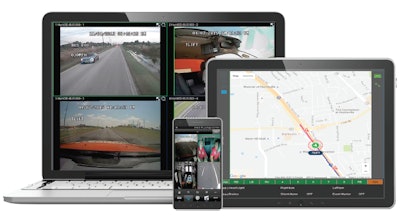
Regardless of the industry in which a business owner is operating, the safety of both the company’s employees and products during transportation are of the utmost importance. Therefore, some companies elect to install mobile surveillance systems in company vehicles, leveraging the “Hawthorne Effect,” says Clint Bryer, Sales Manager for Safety Vision, a mobile surveillance-equipment company headquartered in Houston, Texas.
The “Hawthorne Effect” is simple. “When an individual knows they are being watched, they are likely to behave better,” Bryer says, adding that, “This can significantly reduce bad driving [that puts] the employee and company vehicle at risk, but also very importantly, theft.”
When you have good or bad examples of pre-recorded video to show your new hire, it can help train them to be a better driver when the time comes.” - Clint Bryer, Sales Manager
Of course, theft is a huge concern in the cannabis industry-especially in logistical scenarios when valuable products and significant amounts of cash are transported between cultivation facilities and dispensaries.
Mobile video systems can help lower the risk of theft and increase driver accountability, Bryer says, in numerous ways:
- Providing driver instruction. “When you have good or bad examples of pre-recorded video to show your new hire, it can help train them to be a better driver when the time comes,” Bryer says. “And it is highly recommended [that the system] cover[s] all areas of the vehicle: inside and out, front, sides and rear.”
- Helping to land transportation contracts. “A company is more likely to let another company transport their product if they trust them,” Bryer says, “and the transportation company has the ability to provide proof.”
- Providing “geofencing.” Geofencing uses GPS to create boundaries within a route, Bryer says. “This means that a person with administrative rights to the software can be notified in real-time if their driver enters or exits a particular area,” he adds.
- Utilizing an accelerometer. An accelerometer is a device that measures G-Forces, including hard braking, erratic driving, fast accelerations and even idle time. “This will save on fuel costs, as well as alert you about suspicious activity and bad driving,” Bryer says.
- Providing real-time accessibility to footage. “Most of the industries using mobile video typically just pull the video if there was an incident that took place, a vehicular accident being an example,” Bryer says. But the cannabis industry oftentimes demands real-time capability, “which gives the client the ability to look in live, right into the vehicle via a computer or mobile phone application,” he adds. With the mobile app, Bryer says, a client can access their vehicle from anywhere in the world where they have wireless connectivity.
















